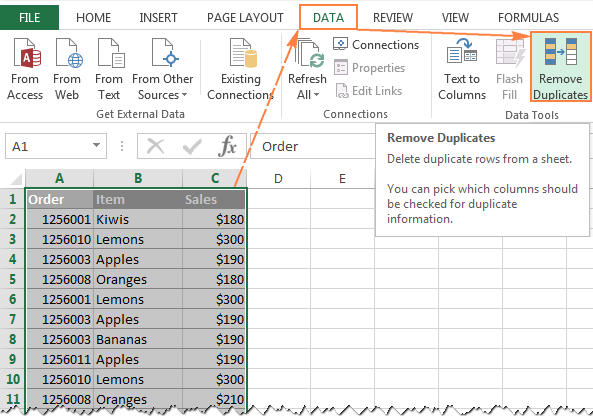


reset ( ) for row in cur : pass Īlso, instantiating a cursor within a Python for loop is a performance killer, especially with more than a handful of items in the loop. SearchCursor (fc, fields ) as cur : for row in cur : passĬur. First, you could create a Pivot Table Report. When iterating over a data set numerous times using the same cursor arguments, it is more efficient to create the cursor once and reset it than recreate it each time. Answer (1 of 2): Im going to interpret this as you are needing to create a list of unique items from a list with duplicates so here goes: There are several methods you can employ. Page_names += page if page_names = '' else delim + page Ī couple of thoughts on your code snippet. SearchCursor (fc, ) as cur : for street, page in cur : Page_names = defaultdict (str ) with arcpy. faultdict - High-performance container datatypes - Python 2.7.17 documentation and 5.11 Conditional Expressions - Python 2.7.17 documentation , the dictionary can be generated with a single pass of the cursor: import arcpy The steps that follow will show you how to get to this result.David, using 8.3. What we want is a single row for each make of vehicle with a list of models after it, separated by commas. They are stored in a table with a separate row for each model, so the make of the car is repeated in each row as well. Let’s look at an example data set… In this case, we have a list of all the Makes and Models of cars available in the U.S. Here is a quick set of data manipulation steps that will build a comma-separated list in a single cell from multiple rows of data… Unfortunately, Excel doesn’t have a simple function to make this possible. Sometimes, it is better to have all the options in a table listed in a comma-separated list rather than broken out across many rows. However, when we want to read a summary of the information, these tables are difficult to work with. When we are sorting, alphabetizing, and filtering, this format is incredibly useful. One example of this is a standard data table that repeats headers and labels for each row. Often, our data comes to us in ways that are better for calculating than they are for reading. 5Download the Combine Multiple Rows Example File.4Cleaning Up the Helper Columns and Finalizing the List.2Building the Concatenation Helper Column.


 0 kommentar(er)
0 kommentar(er)
